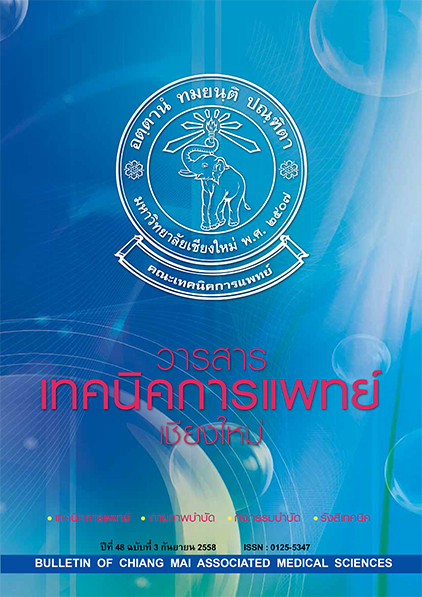Effect of madecassoside combined with aspirin on platelet functions
Main Article Content
Abstract
Introduction: Platelet is a key factor of thrombosis; thus, antiplatelet drugs especially aspirin were generally used to treat patients. However, these drugs have long term side effects. Recently, many studies found that triterpenoid substances from plants can inhibit platelet aggregation. The “madecassoside” extracted from Centella asiatica was also triterpenoid.
Objective: To investigate the effect of madecassoside combined with aspirin on platelet adhesion and aggregation.
Materials and methods: Platelets were mixed with madecassoside at the concentration of 25, 50, 100 and 200 μg/mL. The ADP was used as agonist and the aggregation of platelet was monitored using microplate assay.
Results: The result showed that 50, 100 and 200 μg/mL of madecassoside significantly inhibited platelet aggregation at p<0.05 compared with the control. The 100 and 200 μg/mL of madecassoside plus half-dose of aspirin showed platelet anti-aggregation effect similar to full-dose. Furthermore, 25, 50, 100 and 200 μg/mL of madecassoside mixed with platelet were used to investigate platelet adhesion by adding the mixture into the collagen-coated microplate. The result showed that all concentrations of madecassoside had no inhibition effect on the platelet adhesion induced by ADP.
Conclusions: Madecassoside from Centella asiatica can be used to inhibit platelet aggregation. In addition, combination of madecassoside aspirin could reduce the side effects of aspirin in thrombosis patients.
Bull Chiang Mai Assoc Med Sci 2015; 48(3): 214-221. Doi: 10.14456/jams.2015.22
Article Details
Personal views expressed by the contributors in their articles are not necessarily those of the Journal of Associated Medical Sciences, Faculty of Associated Medical Sciences, Chiang Mai University.


